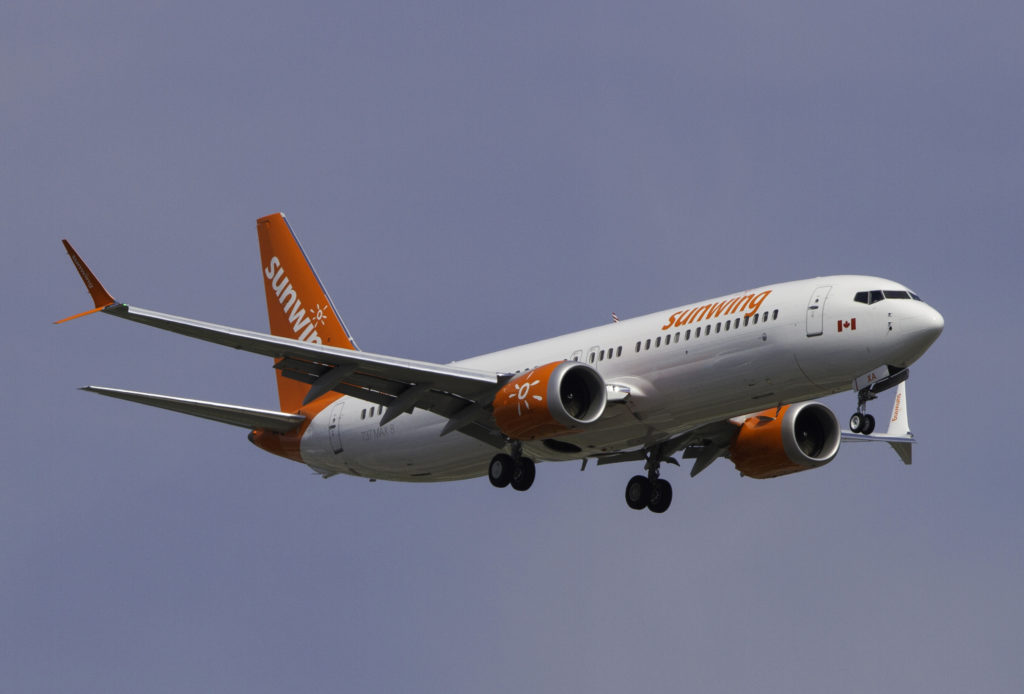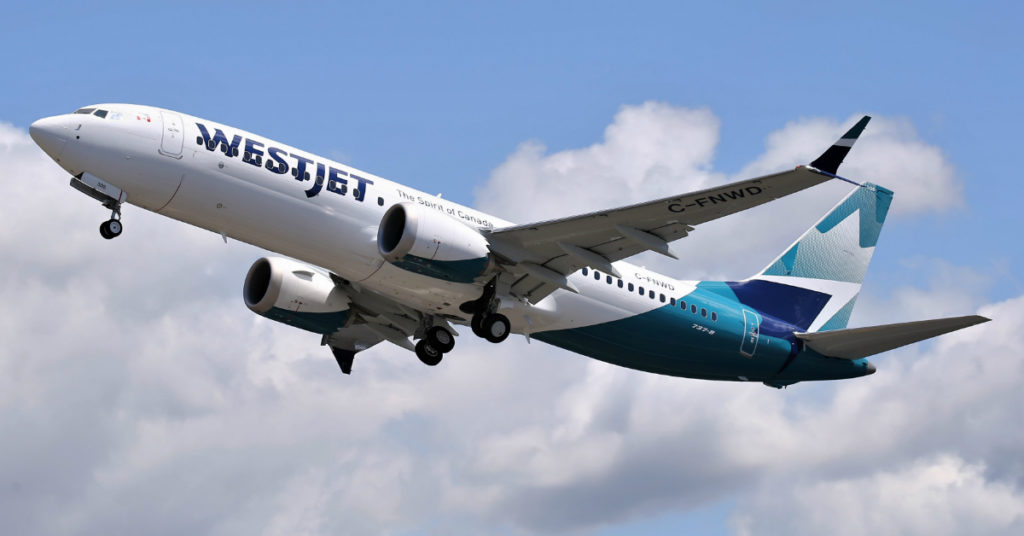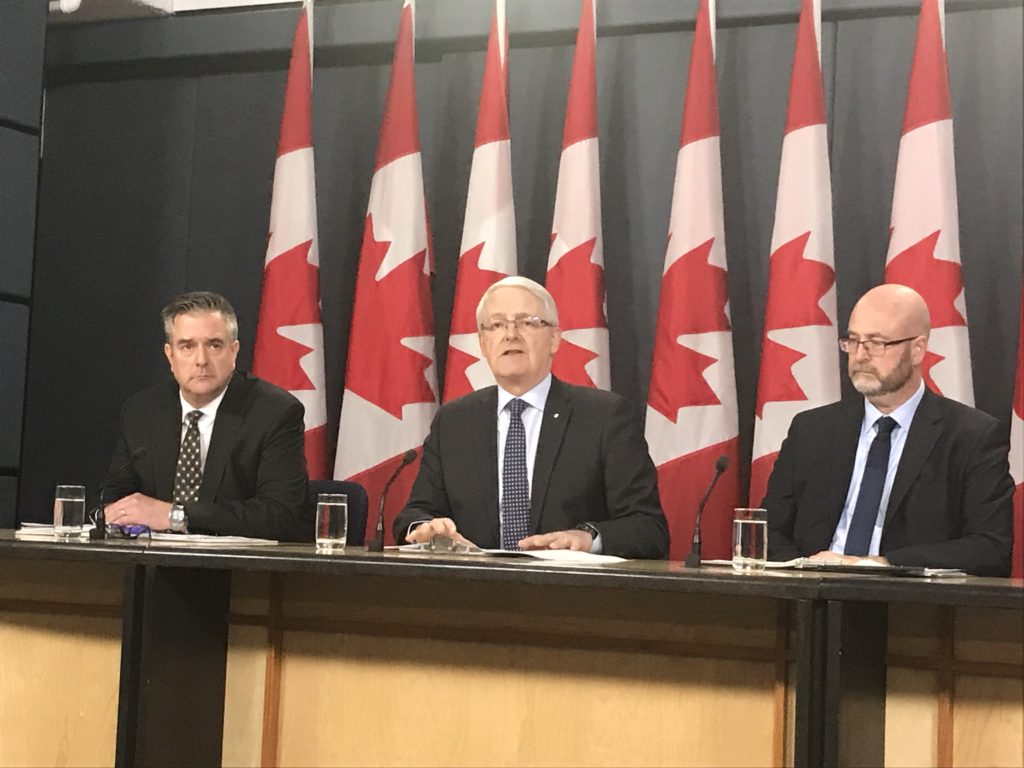Estimated reading time 9 minutes, 16 seconds.
Update: At 2:30 p.m. Eastern on March 13, U.S. President Donald Trump announced that the United States is grounding all 737 MAX 8 and 9 planes. He said the FAA and Boeing had agreed on the action. “The safety of the American people and all people is our paramount concern,” the President said.
Transport Minister Marc Garneau has banned Boeing 737 MAX operations in Canada following the release of new satellite tracking data on March 13 that suggests “possible but unproven” similarities between the flight paths of Ethiopian Airlines Flight 302 and a Lion Air 737 MAX 8 that crashed last October.
He stressed the data is inconclusive and it is too soon to speculate about the exact cause of the Ethiopian 737 MAX 8 accident on March 10, in which all 157 passengers and crew were killed.

However, Garneau said his decision to issue a safety notice restricting commercial passenger flights of MAX 8 and 9 aircraft from arriving, departing or overflying Canadian airspace was reached in consultation with industry, international partners and 737 MAX aircraft operators.
The regulatory action comes on the heels of Sunwing Airlines’ March 12 decision to voluntarily ground its four MAX 8 aircraft. The Toronto-based carrier was the first in North America to cease operations “for evolving commercial reasons unrelated to safety including airspace restrictions being imposed by some of our partner destinations.”
The 737 MAX 8 is currently operated by Air Canada (24), WestJet (13), and Sunwing (4). Both Air Canada and WestJet have reportedly received requests from passengers looking to cancel their MAX 8 flights or switch to another aircraft.
Garneau said none of the Canadian airlines operating the MAX pushed back against the decision to ban its operation in Canadian airspace, citing a common concern for aviation safety.
Air Canada predominantly utilizes the MAX 8 on domestic and U.S. routes. With the largest fleet in the country, it will now face a significant challenge to fill the gaps in its flight schedule.
Sunwing is currently in the process of revising its flights to accommodate the MAX 8 grounding. Its latest brand new 737 MAX 8, with a special Planet Hollywood livery, was just delivered from Boeing on Friday, March 8, and has not yet made its first revenue flight. Two of Sunwing’s MAX 8s are now hangared at Toronto Pearson, with a third parked outside. One is in Edmonton.
To date, European aviation authorities have also banned 737 MAX operations, along with a host of regulators around the world, including China, Indonesia, Singapore, Australia and Egypt. Various global carriers have also grounded the jets pending results of the investigation into the crash of Ethiopian Airlines Flight 302.
Prior to Garneau’s comments on March 13, several media reports had highlighted similarities between the Ethiopian flight and the crash of Lion Air Flight 610 on Oct. 29, 2018, which killed all 189 people on board when it went down off the Indonesian coast.
Both aircraft crashed shortly after takeoff and both struggled to gain altitude after departing the airport.
Preliminary reports from the Lion Air accident have cited erroneous readings from the plane’s angle of attack sensor, which in turn triggered “repeated nose-down trim commands of the horizontal stabilizer,” according to a subsequent U.S. Federal Aviation Administration (FAA) emergency airworthiness directive issued on Nov. 7, 2018. “This condition, if not addressed, could cause the flight crew to have difficulty controlling the airplane, and lead to excessive nose-down attitude, significant altitude loss, and possible impact with terrain.”

Boeing subsequently designed software improvements to the flight control system, in conjunction with the FAA, and the fix is expected to be mandated for all 737 MAX aircraft in April.
“Boeing’s 737 MAX Flight Crew Operations Manual already outlines an existing procedure to safely handle the unlikely event of erroneous data coming from an angle of attack sensor,” said a March 11 press release from the manufacturer. “The pilot will always be able to override the flight control law using electric trim or manual trim. In addition, it can be controlled through the use of the existing runaway stabilizer procedure as reinforced in the Operations Manual Bulletin issued on Nov. 6, 2018.”
So far, the FAA maintains the Boeing 737 MAX 8 is safe to fly. In a tweet posted on the evening of March 12, the agency commented: “Thus far, our review shows no systemic performance issues and provides no basis to order grounding the aircraft. Nor have other civil aviation authorities provided data to us that would warrant action.”
A Matter of Time
Global research firm Frost & Sullivan released an analysis early on March 13 saying it is only a matter of time before the FAA follows suit in grounding the 737 MAX 8 fleet, “partially because the world of aviation is built upon the principle of trust in safe operations. Although we don’t know if 737 MAX aircraft are unsafe, the public’s perception is that they are not, until proven wrong.”
Diogenis Papiomytis, Frost & Sullivan’s global program director for commercial aviation, wrote that the impact of a worldwide grounding would be huge, and “the role of Boeing in the duopoly of commercial narrow body aircraft is at stake.”
Not only was the 737 MAX later to the market following Airbus’ A320 NEO, he wrote, but both China and Russia are now building competing airliners that will further dilute the market.
“Another side effect is that the aviation industry is now seeing the first signs of overcapacity amidst slowing air traffic growth, driven by a slowdown in the global economy and rising fuel prices.
“Many airlines may take the opportunity and cancel orders for the 737 MAX, in light of a possible downturn. Simply put, the business case for new aircraft in 2019 is completely different to 2015 or 2016, when the airlines placed their orders.”
Papiomytis estimated that if the grounding applies to the worldwide fleet, and orders are subsequently deferred, the total impact on Boeing and its suppliers could amount to more than US$4 billion in 2019.

Moody’s Investors Service said on March 12 that it expects the MAX program to eventually overcome the safety-related challenges. However, the financial services company also said the short term effects “could include passengers booking away from routes with MAX equipment, or airlines seeking compensation from Boeing for lost revenue or airlines deferring orders.”
Moody’s also indicated it is too soon to draw any definite conclusions about the impact on the MAX program. It pointed to Boeing’s recent experience with its new 787 Dreamliner aircraft, which was grounded in January 2013 due to potential thermal runaway of its lithium-ion batteries. While there were no fatalities related to that situation, Boeing quickly implemented safety-related improvements and today the Dreamliner is a successful wide-body passenger aircraft.
Meanwhile, Boeing released a statement on March 12 saying it remains confident in the safety of the 737 MAX.
“The United States Federal Aviation Administration is not mandating any further action at this time, and based on the information currently available, we do not have any basis to issue new guidance to operators,” said the manufacturer.
– With files from Andy Cline and Lisa Gordon








